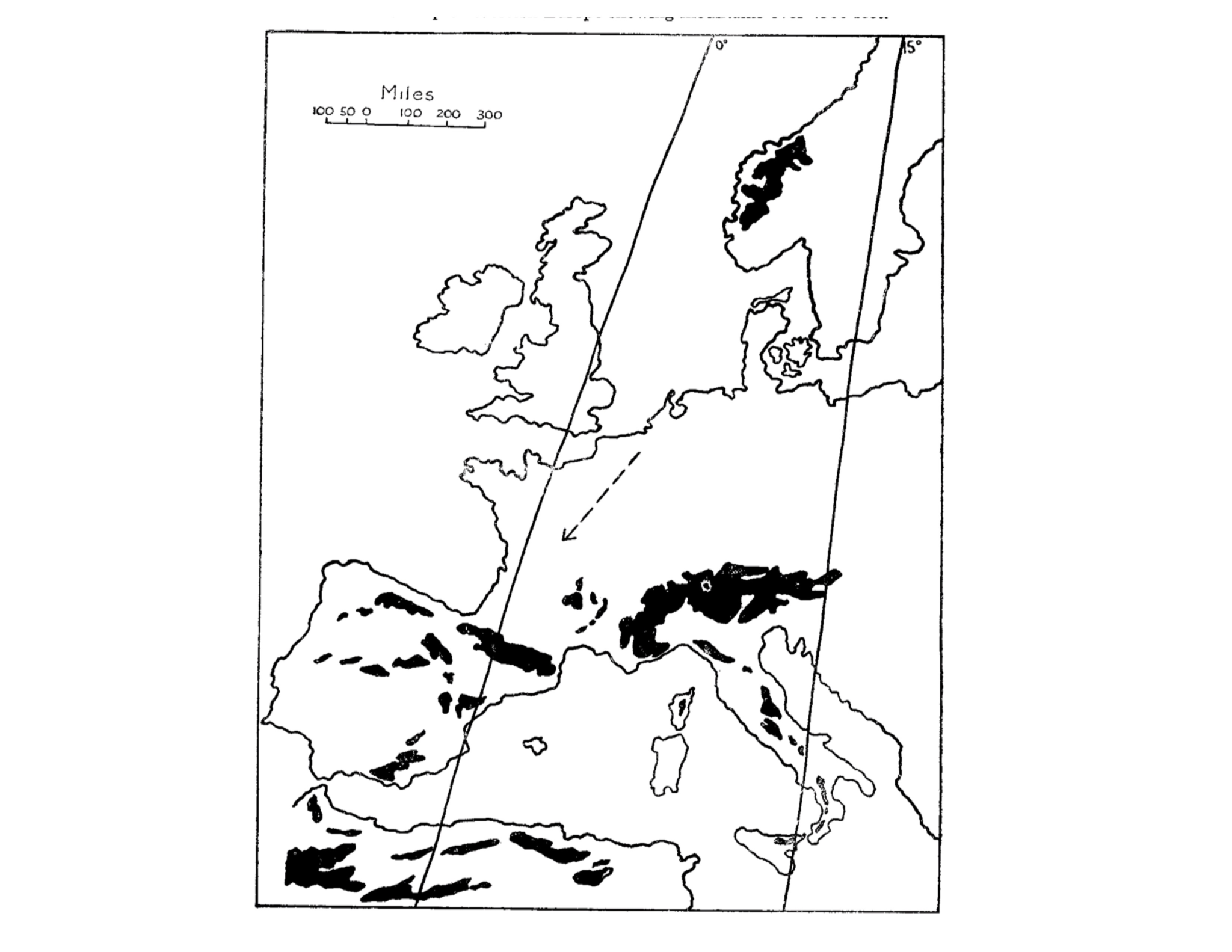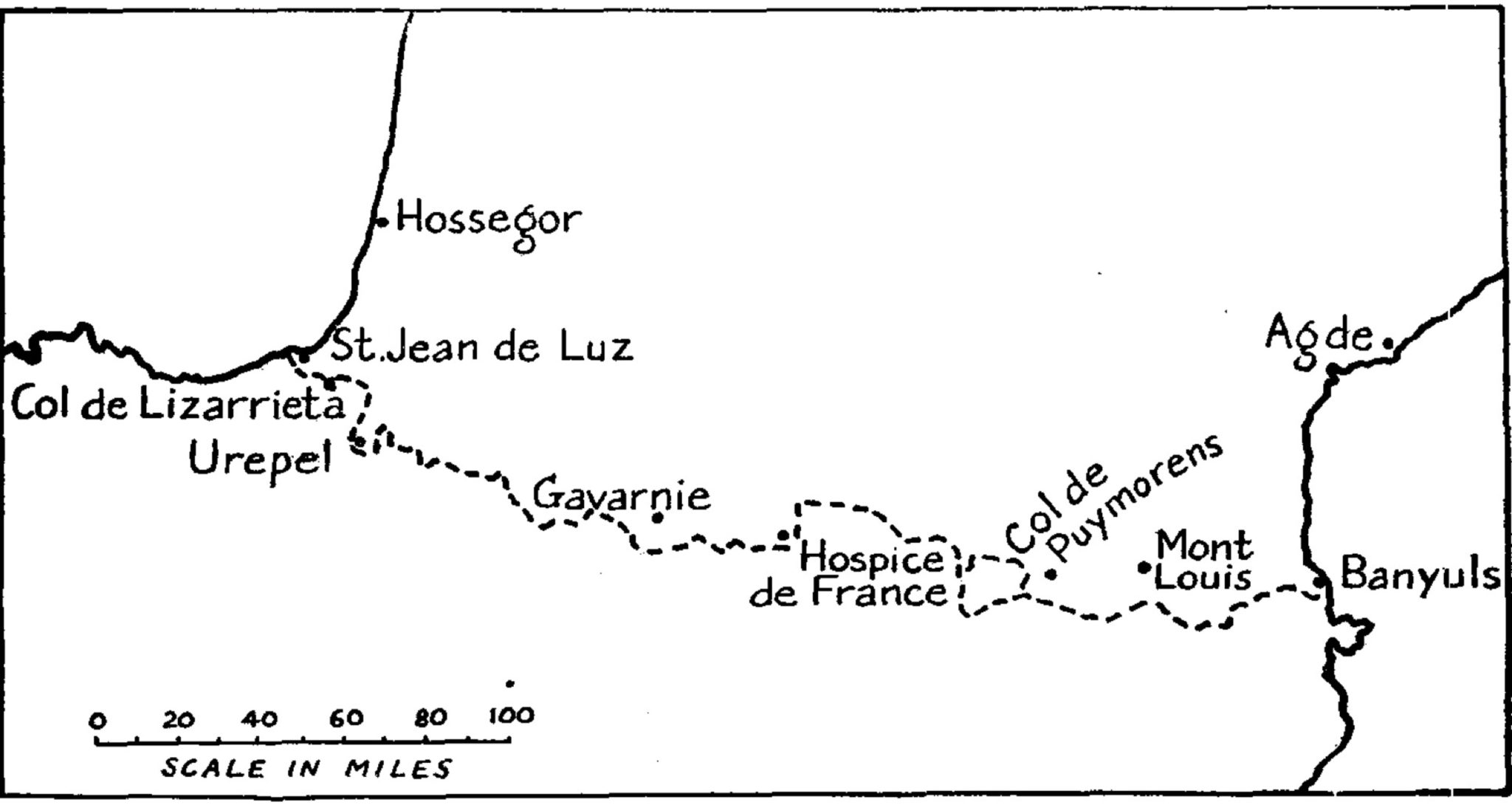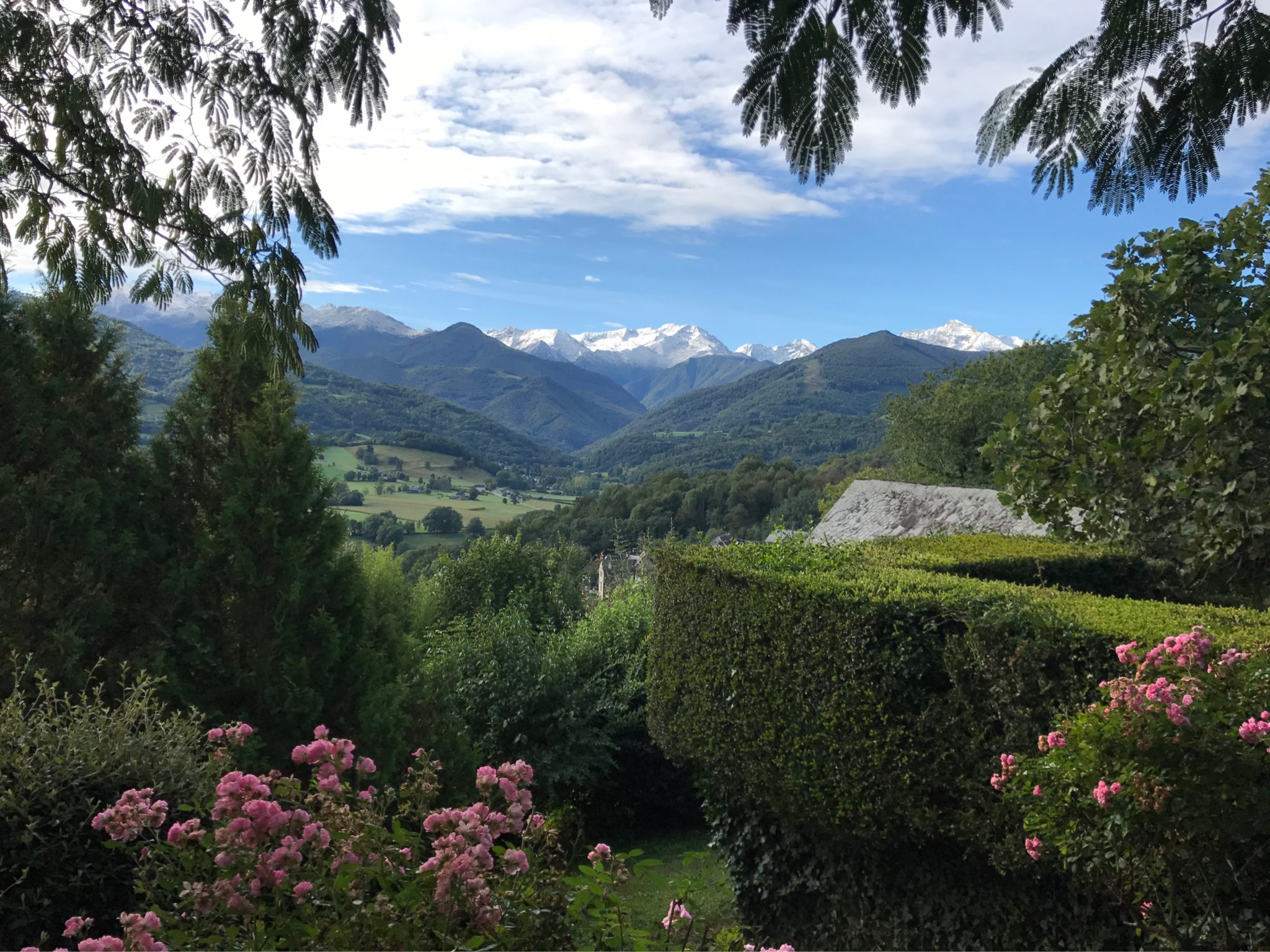How do small land birds migrate past high mountain ranges? This is not a question that has often been asked in the Americas because most of the big mountain ranges run north-south. But in Europe, where the Alps and the Pyrenees would seem to be a formidable barrier to migration (see map below), this issue was controversial in the 1920s. De Burg and von Tschusi, for example, argued that birds crossed the mountains, while Bretscher and von Lucanus claimed, largely on the basis of circumstantial evidence, that passerine birds must migrate through the foothills and coastal areas at the East and west ends if those montane barriers (see Lack and Lack 1953 for references).

The debate was mainly about visible diurnal migration where birds fly close to the ground and might suffer hypoxia and increased predation risk when crossing barren mountain tops. Visible migration of songbirds is not often discussed in the Americas but is both common and well-recorded in Europe.
In 1949, David [1] and Elizabeth Lack went to the French Pyrenees to collect some data that they thought might help to answer this question. David was all about data and evidence and had already made a name for himself with detailed studies of European robins and Darwin’s finches.
Elizabeth had been to St Jean de Luz on the Atlantic coast of France (see map below) to visit an aunt in October 1945 and 1947 where she saw “extremely large numbers of Chaffinches Fringilla coelebs migrating inland about a mile from the sea” (Lack and Lack 1953: 271). There is a 4-km wide region of lowlands and foothills there where small birds might funnel south rather than crossing the high Pyrenees. Presumably inspired by those observations, the Lacks returned from 18 Sept – 7 Oct 1949 to travel a little more widely–from the Atlantic coast to Gavarnie in the high Pyrenees–to make a more systematic study. They had been married only two months earlier so this was something of a birding honeymoon [2]. On that trip in 1949, they found that “Many of our initial ideas proved wrong; we often watched for too long in the wrong place or for too short a time in what we later found was the right place” (Lack and Lack 1953: 271-272).
To make a more informed survey, they returned in 1950 on a small grant from the Royal Society to visit the most promising locales. This time, at Gavarnie, they hit pay dirt: “Once in a lifetime perhaps, the ecologist is translated back into a naturalist, through chancing on a spectacle which combines grandeur with novelty. Such was our fortune at the Port de Gavarnie on 13 October 1950.” (Lack and Lack 1951).
On that date, the Lacks hiked the 5 km from their lodging at Gavarnie (see map below) up into the rocky gorge at Port de Gavarnie (also called Port de Boucharo in France or Puerto de Bujaruelo on the Spanish side). There they discovered a major southward migration of passerines, pigeons, doves, and insects, revealing for the first time (at least to scientists) how small birds crossed the mountains. In hindsight, the answer seems obvious–they crossed in the lowest local mountain passes. Presumably bird catchers had known this for centuries.
The scientific evidence from the 1920s, though, seemed equivocal or possibly even untrustworthy: “De Burg said that he had tens of thousands of such records, but he was so emphatic, and equally emphatic on various other matters in some of which he was wrong, that we treated his evidence too lightly.” (Lack and Lack 1953: 296).

Port de Gavarnie is a 50-m wide pass through the rocky crags at about 2300 m elevation in the mountains that form the physical and political border between France and Spain. On the French side, the pass is at the south end of a 30-km long valley from the plains to the north; on the Spanish side the route south from the Port descends both southeast and southwest into the lowlands of Spain.
In the space of 3 hours in the morning of 13 October, the Lacks watched 795 small passerines (goldfinches, chaffinches, linnets, serins, meadow pipits, white wagtails, and short-toed larks) fly through the pass south of Gavarnie. Later that day 440 wood pigeons and 61 stock doves passed through, followed by butterflies, dragonflies and syrphid flies in the afternoon at the rate of “several thousand an hour”.
Instead of the usual ‘Introduction’ heading for the beginning of their 1951 paper the Lacks called that section ‘Excelsior’, a Latin word meaning ‘ever upward’ or ‘even higher’. I am not sure whether they were referring to the migrants or their discovery but David was never shy about introducing a little poetry into his writing. About the Pyrenean discovery, he later said “The most remarkable days for a naturalist combine grandeur with novelty, the beautiful with the rare or unexpected. As a boy, such experiences came to me seeing for the first time a new kind of bird…As I grew older , such memorable days became much rarer, for though the beauty was still there, the unexpected was gone…But there was one much later occasion, just after my fortieth birthday, when in lovely autumn weather amid superb scenery, a deeply impressive spectacle was combined not merely with knowledge that no one had written of it before, but that one of the puzzles of migration was solved. This happened on October 13th, 1950′ (Anderson 2013: 111).
References
Anderson T (2013) The Life if David Lack: father if evolutionary ecology. Oxford Univ Press, Oxford.
Birkhead TR, Wimpenny J, Montgomerie R (2014) Ten Thousand Birds: ornithology since Darwin. Princeton Univ Press, Princeton, NJ.
Lack D, Lack E (1951) Migration of insects and birds through a Pyrenean pass. J. Animal Ecology 20:63-67.
Lack D, Lack E (1953) Visible migration through the Pyrenees: an autumn reconnaissance. Ibis 95:271-309.
Footnotes
[1] David Lambert Lack (1910-1973) was one of the most influential ornithologists of the 20th century, revolutionizing both ornithology and ecology by taking an evolutionary approach to behaviour, ecology and life histories.
[2] David’s friend and mentor Julian Huxley (1887-1975) also took his new wife Juliette on a somewhat less successful birding honeymoon. Juliette later wrote that Julian seemed more interested in the love life of the great crested grebe (Birkhead et al 2014).
NOTE: I was inspired to write this post as I am currently doing field work at CNRS Moulis in the Pyrenees about half way between Gavarnie and Puymorens. Photo below shows the view up the Biros Valley to the top of the Pyrenees in this region. I have not yet seen the sort of migration documented by the Lacks but the mountains here are much lower 1500 m) and the birds may cross on a broader front.
